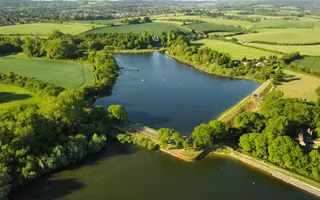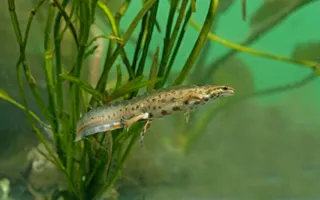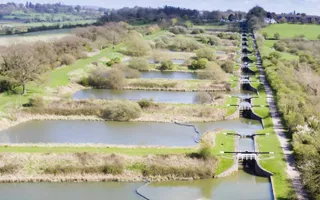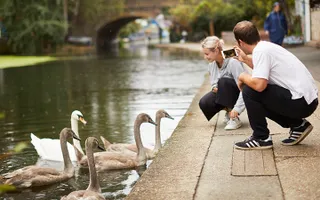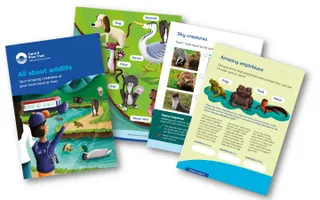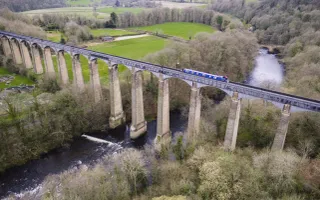I suppose one thing that’s really important in cities with a lot of water in it, like this one, is the water quality because that’s causing so many issues isn’t it?
Yeah, that’s right. There’s often surface water runoff will go into the canals – both in the cities from the traffic and in more rural areas from the surrounding farmland. And that can cause an over-enrichment which can then cause algal blooms which is then bad news for the animals that live in the water because they can find that the oxygen drops right out. But having the open water in the cities is just so great for people to be able to connect to that. And the sound of the water running over the weir – I love that sound of moving water. It’s just so good for your mental wellbeing.
It is. I guess it just connects people as well. Because, you know, if we are aware of what’s going on in our waterways in our open water, like this, then we’re going to be more empowered to act to do something to protect it as well because it’s right on our doorstep. It is. I mean, this waterway is just on so many people’s doorsteps. They literally just come out of their front door, and a couple of minutes walk and they’re on the canal next to the water. Seeing all of the animals who will call this home, all of the different ducks and the birds in the trees. It’s just a fantastic habitat.
Yeah, exactly. And all different levels, from aquatic plants to birds, it’s just excellent isn’t it?


